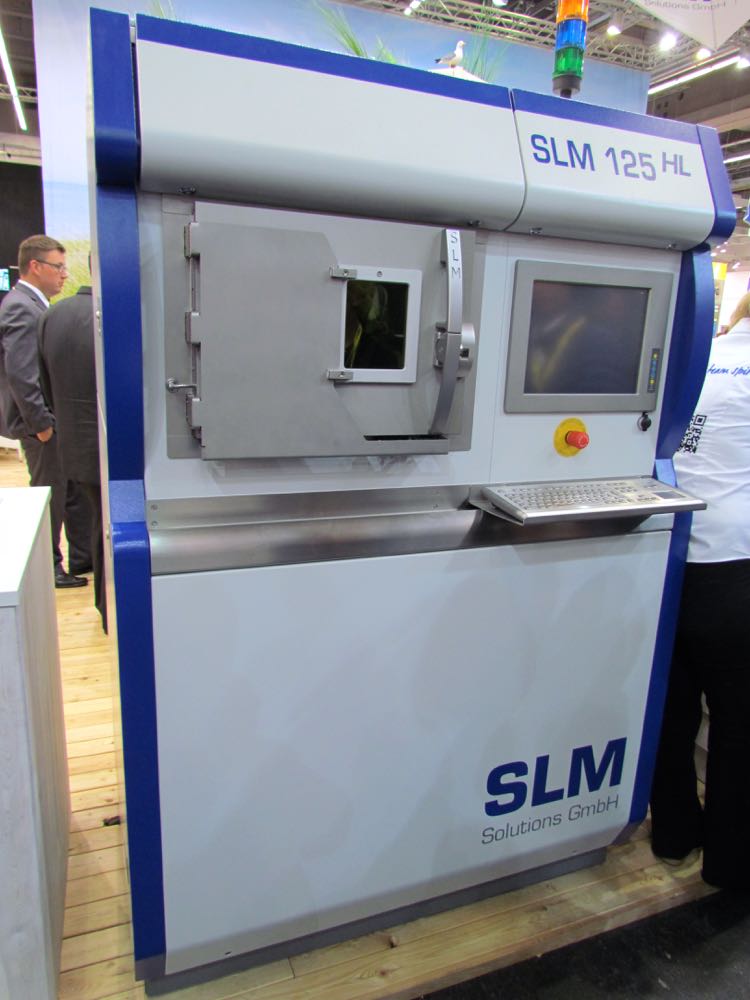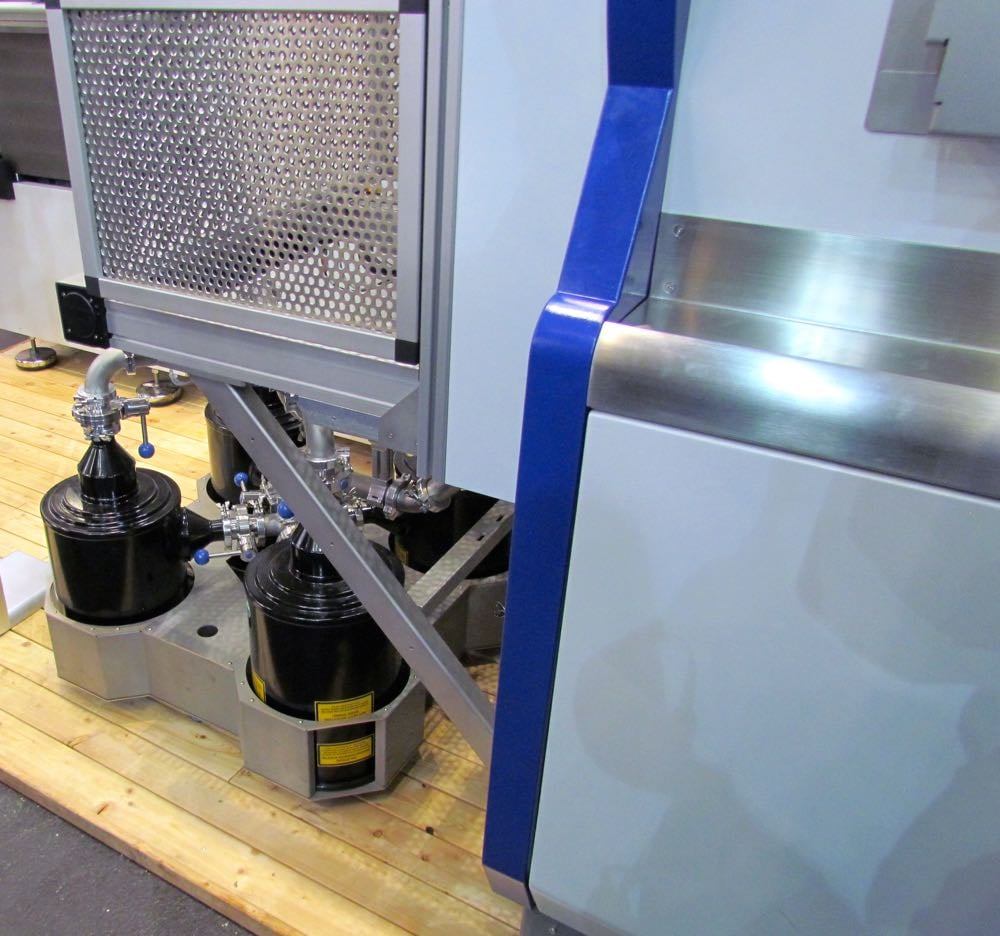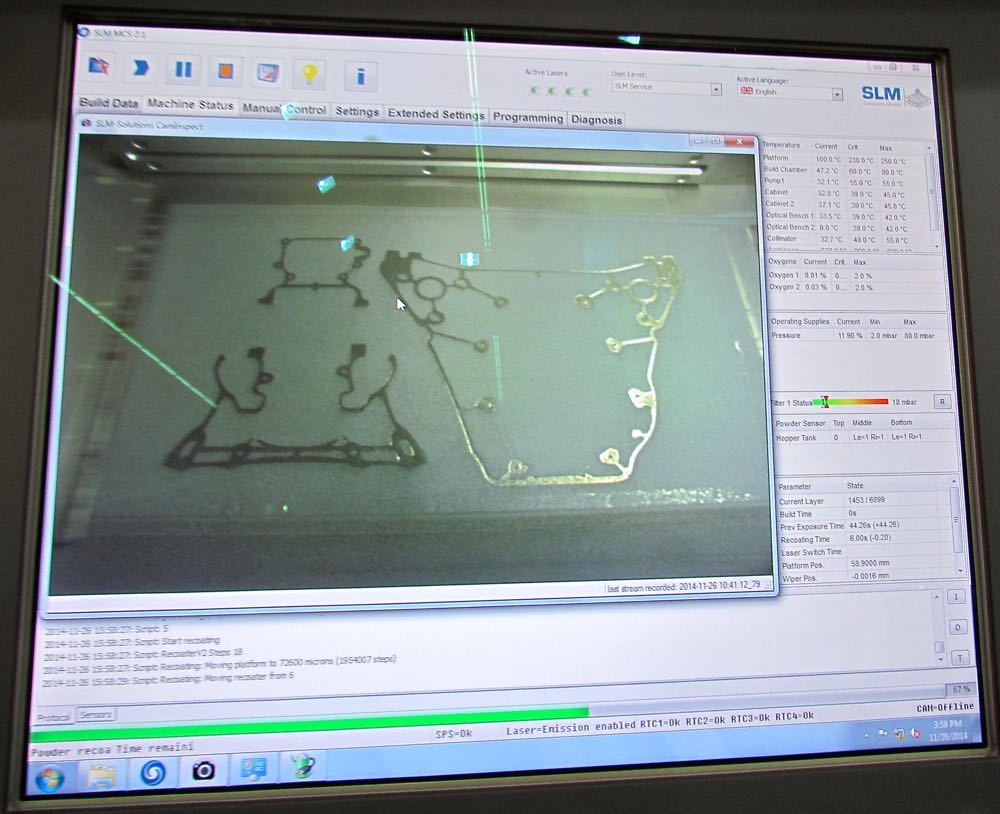We took a close look at SLM’s line of metal 3D printers and found several very interesting features.
The entire SLM line of 3D printers uses, as one might guess from the company’s name, Selective Laser Melting technology. A powerful laser sweeps across a bed of fine metal particles, selectively heating and fusing them into layers that gradually compose a fully metal object. This approach is used by other manufacturers, but SLM does a few things differently.
SLM achieves speed by using multiple lasers, each covering a particular zone of the powder bed. You can see how it works in our video above, with four lasers simultaneously going at the powder bed (best view towards the end). This significantly speeds the printing process, as you might expect.
In the video you’ll notice the green tint to the observation window. The window is part of a complete atmospheric control system: the powder bed and laser operation take place within a totally controlled environment with, they say, “over 100 parameters”, which can be adjusted to match the particular materials involved. Typically the atmosphere within the build chamber is entirely nitrogen or argon gas. Argon is used when the metals are reactive, otherwise there could be an explosive surprise.
Like many powder printers, the SLM units recover unused powder for subsequent builds during post print processing. Powder is manually vacuumed off prints and recycled. This is critically important for metal 3D printers because of the high cost of finely powdered metal materials.
Finally, SLM takes great care to ensure the safety of the machine and its operator. Metal 3D printing is a dangerous business, given the high-powered laser, sealed build chamber and potentially explosive materials. The machines include a number of automated safety checks that must pass before the build chamber door can be opened, for example.
Machines as complex and capable as SLM’s are not inexpensive. Prices range from €700,000-1,300,000 (USD$850-1,600), plus any options that may be required. But expenses don’t end there; these machines need to be installed in specific workshop environments with power and ventilation requirements that could cost a good fraction of the machine’s cost.
Via SLM




